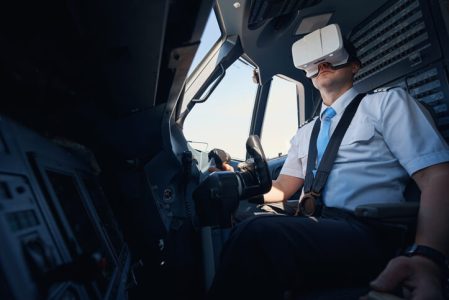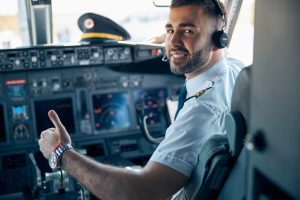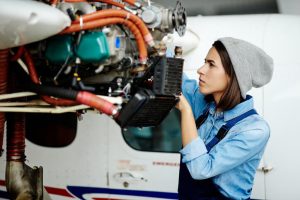New VR Rotor Wing Pilot Training
Revolutionizing pilot training, Loft Dynamics has introduced a cutting-edge helicopter virtual reality (VR) simulator in Santa Monica, CA. This innovative technology is set to transform the way pilots train across various aircraft.
The Airbus H125 Flight Simulation Training Device (FSTD) offers a realistic full-motion experience with functioning helicopter controls and a virtual reality outside environment. Despite being one-twentieth of the cost of a traditional simulator, it provides immense value and safety benefits.
Enabled with cloud-based software, the simulator allows for customizable scenarios catering to various training needs. From simulated landings in remote locations to practicing flight under challenging weather conditions, pilots of all levels can enhance their skills in a safe and controlled environment.
Affordability makes these training devices ideal for in-house pilot training, offering significant cost savings compared to traditional methods. With the potential for fixed wing VR training devices on the horizon, Loft Dynamics is paving the way for accessible and effective pilot training solutions.
Advantages of Staying Up to Date with Advanced Pilot Training Technology
- Cost-Effectiveness: Advanced pilot training technology, such as flight simulators, can significantly reduce the cost of training. They eliminate the need for actual flight hours, which can be expensive due to fuel costs, aircraft maintenance, and instructor fees.
- Competitive Edge: As the aviation industry evolves, pilots who are proficient in using the latest technologies will have a competitive advantage.
- Increased Efficiency: Advanced training technologies can help pilots master complex procedures and maneuvers without the risk and expense of practicing them in a real helicopter. This can lead to increased efficiency in actual flight operations.
- Better Emergency Handling: Advanced simulators can replicate various emergency situations, helping pilots to practice their response and decision-making skills in a safe environment. This can greatly improve their ability to handle emergencies in real flights.
- Safety Benefits: Utilizing advanced technology in pilot training can significantly enhance safety. Pilots can learn from mistakes made in a simulated environment without risking lives or damaging equipment. For instance, the use of VR (Virtual Reality) in flight training allows pilots to practice dangerous maneuvers and emergency procedures safely.
- Lifesaving Potential: By preparing pilots for a wide range of potential emergency scenarios, advanced training technology can ultimately save lives.
Traditional flight training methods consume large amounts of fuel and emit considerable levels of carbon emissions. By transitioning more training sessions to the virtual realm, this training not only advances the quality of education but also contributes positively to the global effort to combat climate change. This approach aligns with the growing demand for sustainable practices within the aviation industry, making the adoption of such simulators an attractive proposition for eco-conscious flight schools and airlines.










